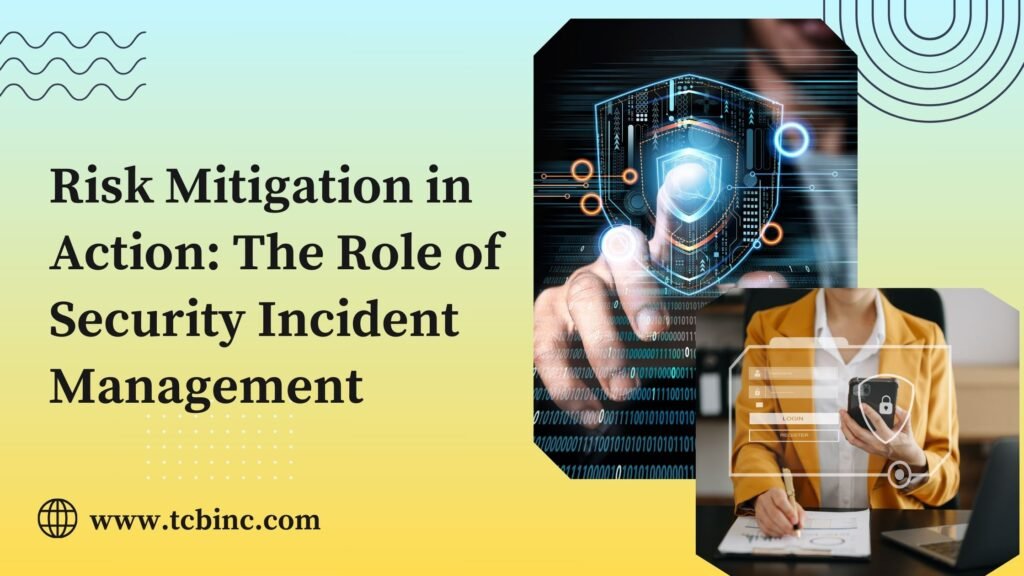boAt Type C A325/A320 Tangle-free, Sturdy Type C Cable with 3A Rapid Charging & 480 Mbps Data Transmission Speed, Compatible with Smartphones & Tablets(Black)
₹125.00 (as of December 22, 2024 20:34 GMT +05:30 - More infoProduct prices and availability are accurate as of the date/time indicated and are subject to change. Any price and availability information displayed on [relevant Amazon Site(s), as applicable] at the time of purchase will apply to the purchase of this product.)
In today’s interconnected digital landscape, organizations face a myriad of cybersecurity threats that can potentially disrupt operations, compromise sensitive data, and tarnish reputations. From sophisticated cyber-attacks to internal vulnerabilities, the risk landscape is constantly evolving, requiring proactive measures to safeguard against potential threats. One such crucial measure is security incident management, which plays a pivotal role in identifying, assessing, and mitigating risks before they escalate into major security breaches. In this blog, we delve into the significance of security incident management and how it serves as a linchpin in risk mitigation strategies.
Understanding Security Incident Management
Security incident management encompasses a structured approach to handling security incidents, ranging from unauthorized access attempts and malware infections to data breaches and system disruptions. At its core, security incident management aims to minimize the impact of security incidents by swiftly detecting, responding to, and recovering from them. This proactive stance enables organizations to contain incidents before they spiral out of control, thereby reducing potential damages and losses.
The Components of Effective Incident Management
A robust security incident management framework comprises several key components:
Incident Detection: The first step in incident management involves identifying potential security breaches through monitoring systems, analyzing network traffic, and employing intrusion detection mechanisms. Early detection enhances the organization’s ability to respond promptly and mitigate risks effectively.
Incident Response: Once an incident is detected, a coordinated response is initiated to contain the threat, mitigate damages, and restore normal operations. This phase involves deploying incident response teams, isolating affected systems, and implementing temporary countermeasures to prevent further harm.
Investigation and Analysis: Following containment efforts, a thorough investigation is conducted to analyze the root cause of the incident, identify vulnerabilities, and gather evidence for forensic analysis. This step is crucial for understanding the nature and scope of the breach, informing remediation strategies, and preventing future incidents.
Remediation and Recovery: With insights gained from the investigation, remediation actions are implemented to address identified vulnerabilities, patch security gaps, and strengthen defenses against similar threats. Additionally, recovery efforts focus on restoring affected systems, data, and services to their pre-incident state while minimizing downtime and disruptions.
Documentation and Lessons Learned: Throughout the incident management process, detailed documentation is maintained to capture incident details, response actions, and outcomes. This documentation serves as a valuable resource for post-incident analysis, regulatory compliance, and knowledge sharing. Furthermore, conducting post-incident reviews allows organizations to identify areas for improvement, refine incident response procedures, and enhance overall resilience.
The Role of Security Incident Management in Risk Mitigation
Effective security incident management plays a pivotal role in mitigating risks across the organization:
Proactive Threat Mitigation: By promptly detecting and responding to security incidents, organizations can mitigate potential risks before they escalate, minimizing the likelihood of significant damages or data breaches.
Rapid Response and Recovery: A well-defined incident management process enables organizations to respond swiftly to security threats, containing incidents and minimizing their impact on operations. This agile response capability enhances resilience and facilitates quicker recovery from security breaches.
Continuous Improvement: Through post-incident analysis and lessons learned, security incident management facilitates continuous improvement of cybersecurity practices. By identifying recurring patterns, vulnerabilities, or gaps in defenses, organizations can refine their security posture, bolstering resilience against future threats.
Compliance and Governance: Security incident management frameworks often align with regulatory requirements and industry standards, ensuring organizations’ compliance with data protection regulations and security mandates. By adhering to established incident management practices, organizations demonstrate their commitment to cybersecurity governance and risk management.
Conclusion
In an era marked by escalating cyber threats and evolving risk landscapes, effective risk mitigation strategies are paramount for safeguarding organizational assets, reputation, and customer trust. Security incident management serves as a cornerstone of these strategies, enabling organizations to detect, respond to, and recover from security incidents in a timely and efficient manner. By embracing a proactive approach to incident management, organizations can enhance their resilience, minimize risks, and navigate the complexities of today’s cybersecurity landscape with confidence.






0 Comments